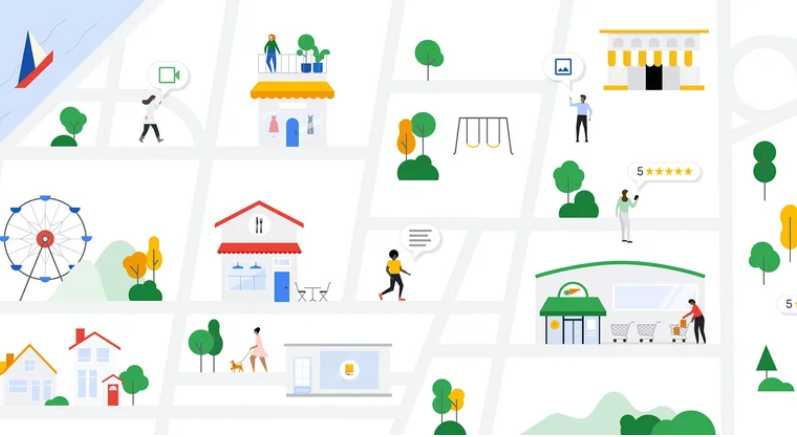Ensuring Accuracy on Google Maps: Fraud Prevention Measures, Potential Drawbacks, and User Guidelines

Google has recently shared the measures it has implemented to prevent the spread of fake information on Google Maps. While Google Maps is a popular platform for finding directions, public transportation information, and exploring through Street View, it is also home to a large amount of user-contributed content, such as reviews, ratings, and business information. However, some of this content may be misleading or fraudulent, which is why Google has taken steps to prevent its dissemination.

According to a recent blog post by Ashish Gupta, Google's engineering director for user-generated content, the company employed machine learning technology to remove a significant amount of fake user-generated content from Google Maps in 2022. This included the elimination of millions of policy-violating reviews, over 200 million photos, and 7 million videos that were either low quality, blurry or violated Google's content policies. Additionally, Google prevented around 20 million attempts to create fake business profiles.
Google has provided some examples of fraudulent activities on Google Maps, such as a scam that involved placing fake phone numbers on images of businesses. According to Gupta, scammers would overlay misleading phone numbers onto user-contributed photos, in an attempt to deceive unsuspecting individuals into calling the fraudulent number rather than the actual business.
Google's machine learning technology was able to quickly identify and remove fraudulent images from Google Maps, often blocking them from being published altogether. This allowed the company to effectively prevent the spread of inaccurate or misleading information on the platform.
Are there potential drawbacks to Google relying solely on machine learning algorithms to remove fraudulent data from Google Maps?
While machine learning technology has proved to be a useful tool in identifying and removing fraudulent content from Google Maps, there are potential downsides to solely relying on this approach.
One potential issue is that machine learning algorithms may not always be accurate in detecting fraudulent content. These algorithms depend on training data, which may not adequately represent all forms of fraudulent activity on the platform. This could lead to legitimate content being flagged as fraudulent and removed, or fraudulent content going undetected.
Another concern is that machine learning algorithms may not be able to keep up with rapidly evolving forms of fraudulent activity. Scammers may develop new tactics that the algorithms are not yet capable of detecting, resulting in the continued spread of fake information on the platform.
Moreover, relying solely on machine learning algorithms for moderating user-generated content could result in the over-reliance on automation, leading to the loss of nuance and context, as well as the inability to make subjective judgments that require human discretion.
Finally, there is a risk of bias in the training data used to train machine learning algorithms. If the training data does not accurately represent the diversity of user-generated content on Google Maps, then the algorithms may be more likely to flag certain types of content as fraudulent while missing others.
Related: Hidden Google Maps Features Everyone Should Know
What steps can you take to ensure that the information you find on Google Maps is accurate and reliable?
To ensure that the information you find on Google Maps is dependable and accurate, there are several measures you can take. Firstly, it's important to verify the information you find by cross-referencing it with other reliable sources, such as the business's official website or social media accounts. This will help to confirm relevant details, such as the business's address and operating hours.
Secondly, it's advisable to read reviews and ratings with a critical mindset. Instead of relying on individual reviews, look for a general consensus of opinions. Pay attention to reviews that offer specific details about the business or its services, and avoid those that are vague or generalized.
Thirdly, if you happen to come across inaccuracies or fraudulent content on Google Maps, you can use the reporting tool provided by Google to report it. This includes reporting fake business profiles, spam reviews, and inaccurate addresses.
Lastly, you can help ensure the accuracy of Google Maps by contributing your own dependable and trustworthy information. By sharing your reviews, ratings, and photos, you can assist other users in making informed decisions about businesses and locations.
Related: Check out this Google Earth timelapse to see how the world has changed

Is there a need for greater regulation and oversight of online user-generated content in general?
The need for greater regulation and oversight of online user-generated content is currently a hotly debated topic. Although user-generated content has brought about many positive changes in the way we communicate and share information, it has also opened up new avenues for the spread of fake news, hate speech, and other harmful content.
One argument in favor of greater regulation is that it can help prevent the spread of harmful content online. Regulations could require social media platforms to remove harmful content, such as hate speech and fake news, thereby protecting vulnerable individuals and groups from being targeted by online harassment and abuse.
Moreover, regulations could promote greater transparency and accountability among social media companies by requiring them to disclose their moderation processes and measures taken to prevent the spread of harmful content. This could build greater trust between users and social media companies.
However, there are arguments against greater regulation and oversight of online user-generated content. One argument is that regulation could limit free speech and innovation by imposing strict rules on what types of content are allowed online.
Another argument is that it may be challenging to enforce regulations in practice due to different countries having varying laws and regulations regarding free speech and the regulation of online content. It could be difficult to create a set of regulations that can be applied universally and effectively.
Overall, there is a need for thoughtful debate and consideration around the regulation and oversight of online user-generated content. While there are valid arguments for both greater regulation and against it, any regulations put in place must balance the need for protection against harmful content with the need to preserve free speech and promote innovation.
Read further: Google Maps Lite Mode
Advertisement


















